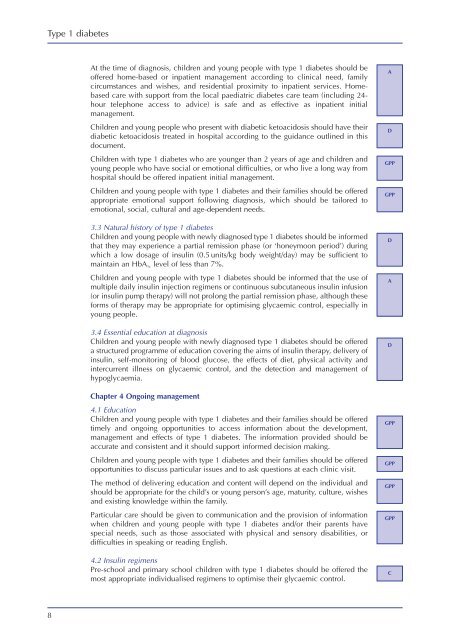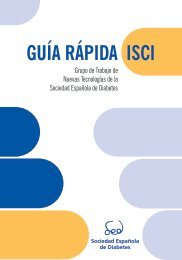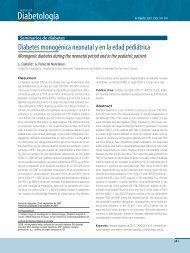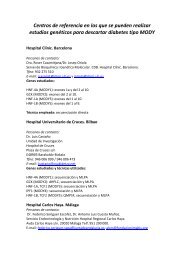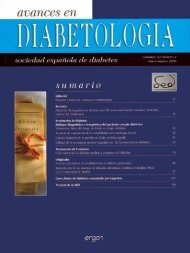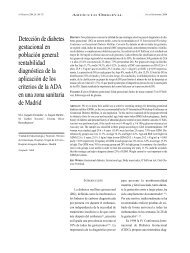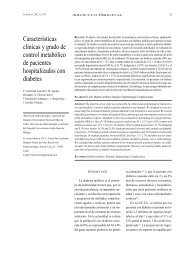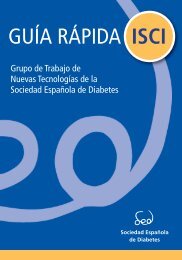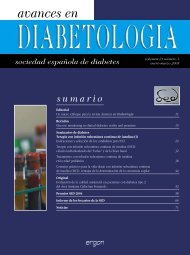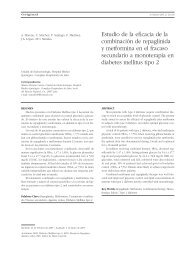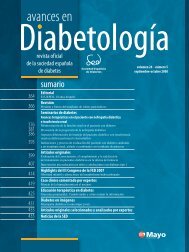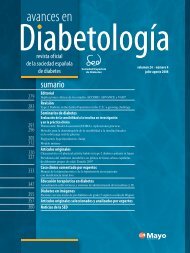Create successful ePaper yourself
Turn your PDF publications into a flip-book with our unique Google optimized e-Paper software.
<strong>Type</strong> 1 <strong>diabetes</strong>At the time of diagnosis, children and young people with type 1 <strong>diabetes</strong> should beoffered home-based or inpatient management according to clinical need, familycircumstances and wishes, and residential proximity to inpatient services. Homebasedcare with support from the local paediatric <strong>diabetes</strong> care team (including 24-hour telephone access to advice) is safe and as effective as inpatient initialmanagement.Children and young people who present with diabetic ketoacidosis should have theirdiabetic ketoacidosis treated in hospital according to the guidance outlined in thisdocument.Children with type 1 <strong>diabetes</strong> who are younger than 2 years of age and children andyoung people who have social or emotional difficulties, or who live a long way fromhospital should be offered inpatient initial management.Children and young people with type 1 <strong>diabetes</strong> and their families should be offeredappropriate emotional support following diagnosis, which should be tailored toemotional, social, cultural and age-dependent needs.3.3 Natural history of type 1 <strong>diabetes</strong>Children and young people with newly diagnosed type 1 <strong>diabetes</strong> should be informedthat they may experience a partial remission phase (or ‘honeymoon period’) duringwhich a low dosage of insulin (0.5 units/kg body weight/day) may be sufficient tomaintain an HbA 1c level of less than 7%.Children and young people with type 1 <strong>diabetes</strong> should be informed that the use ofmultiple daily insulin injection regimens or continuous subcutaneous insulin infusion(or insulin pump therapy) will not prolong the partial remission phase, although theseforms of therapy may be appropriate for optimising glycaemic control, especially inyoung people.3.4 Essential education at diagnosisChildren and young people with newly diagnosed type 1 <strong>diabetes</strong> should be offereda structured programme of education covering the aims of insulin therapy, delivery ofinsulin, self-monitoring of blood glucose, the effects of diet, physical activity andintercurrent illness on glycaemic control, and the detection and management ofhypoglycaemia.Chapter 4 Ongoing management4.1 EducationChildren and young people with type 1 <strong>diabetes</strong> and their families should be offeredtimely and ongoing opportunities to access information about the development,management and effects of type 1 <strong>diabetes</strong>. The information provided should beaccurate and consistent and it should support informed decision making.Children and young people with type 1 <strong>diabetes</strong> and their families should be offeredopportunities to discuss particular issues and to ask questions at each clinic visit.The method of delivering education and content will depend on the individual andshould be appropriate for the child’s or young person’s age, maturity, culture, wishesand existing knowledge within the family.Particular care should be given to communication and the provision of informationwhen children and young people with type 1 <strong>diabetes</strong> and/or their parents havespecial needs, such as those associated with physical and sensory disabilities, ordifficulties in speaking or reading English.4.2 Insulin regimensPre-school and primary school children with type 1 <strong>diabetes</strong> should be offered themost appropriate individualised regimens to optimise their glycaemic control.ADGPPGPPDADGPPGPPGPPGPPC8


